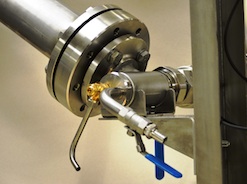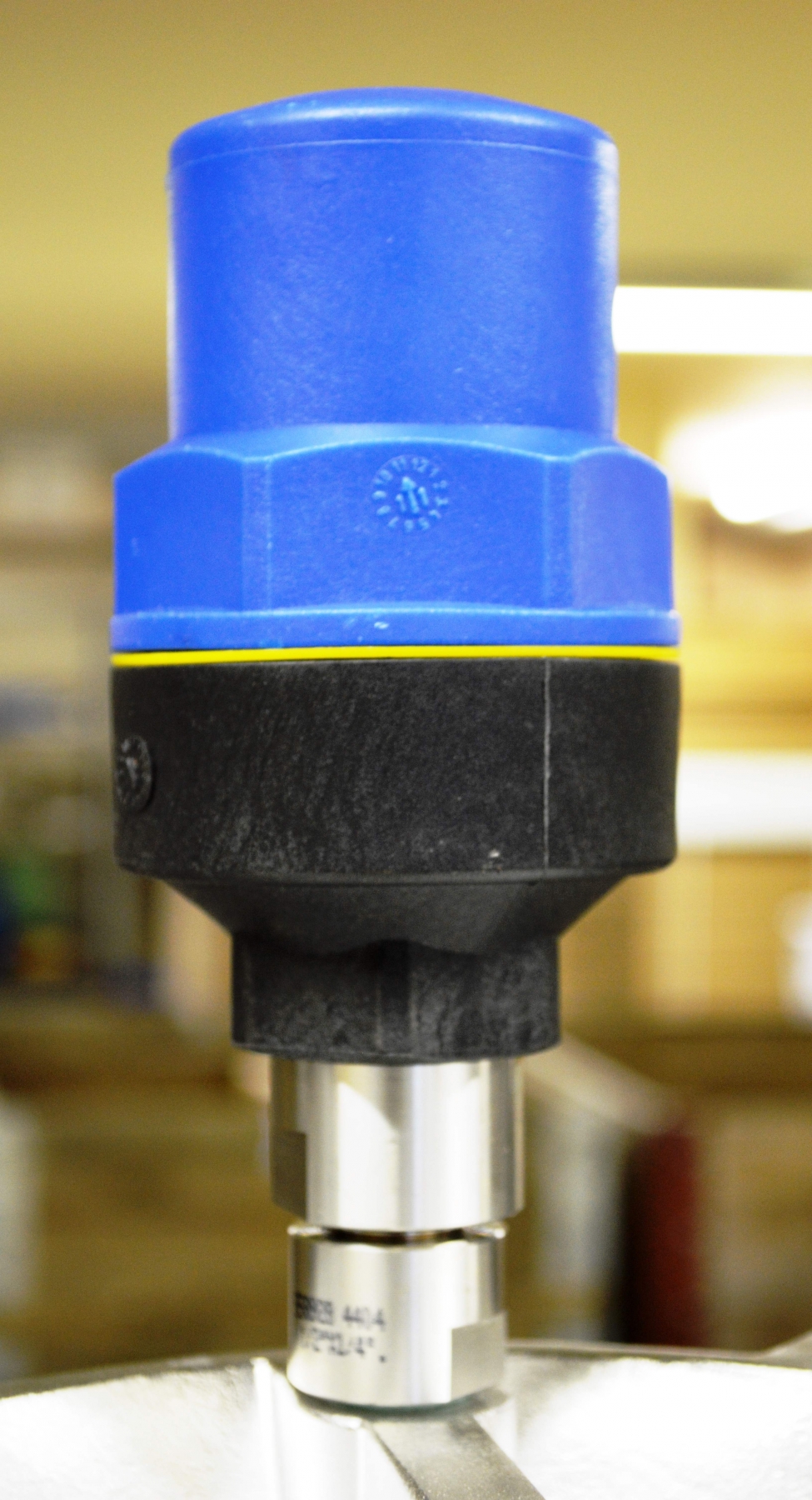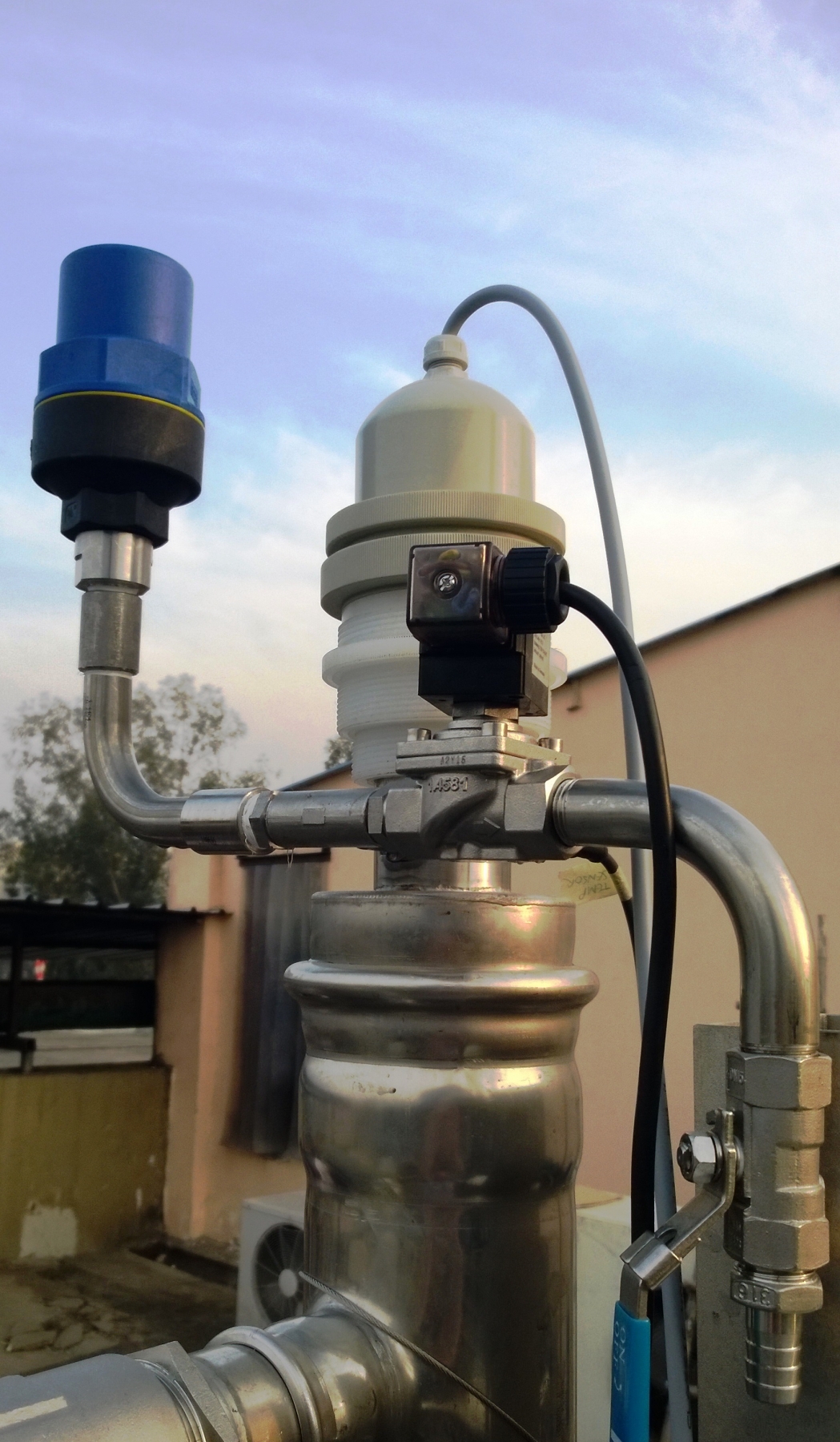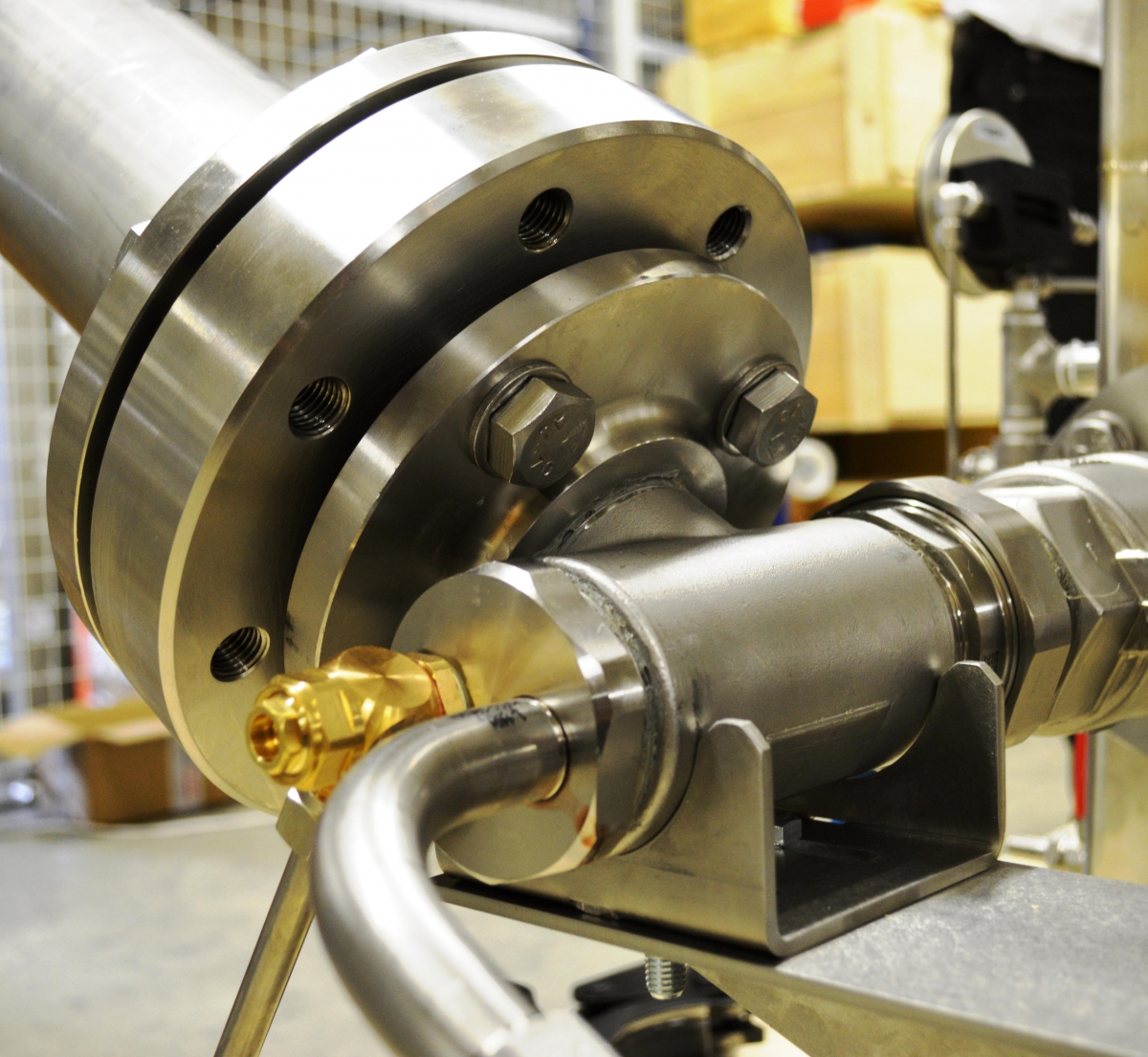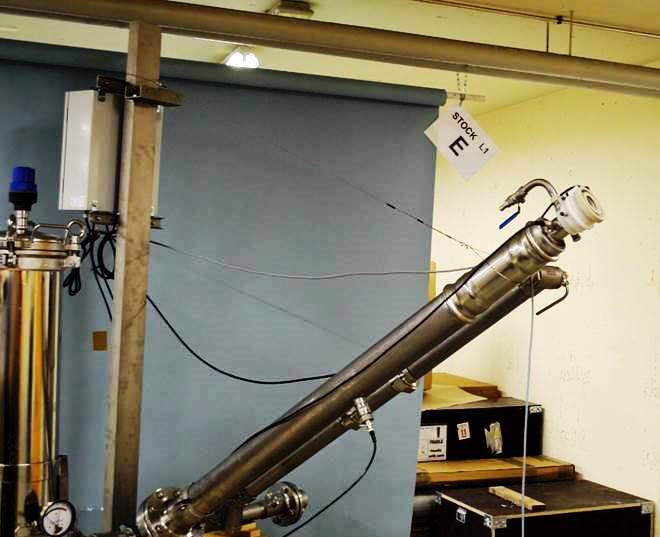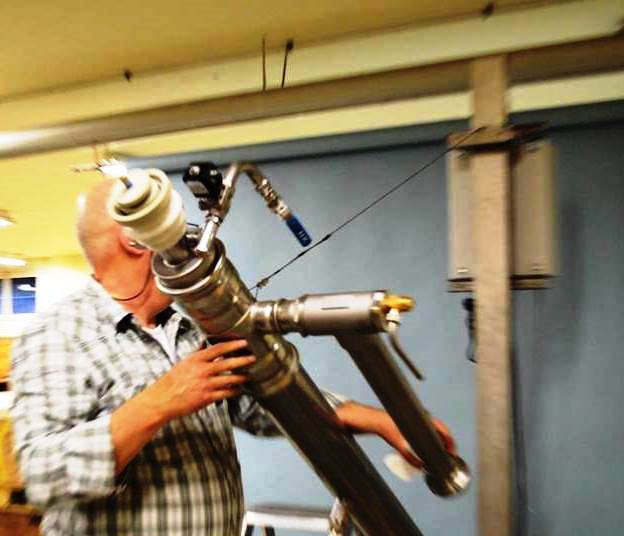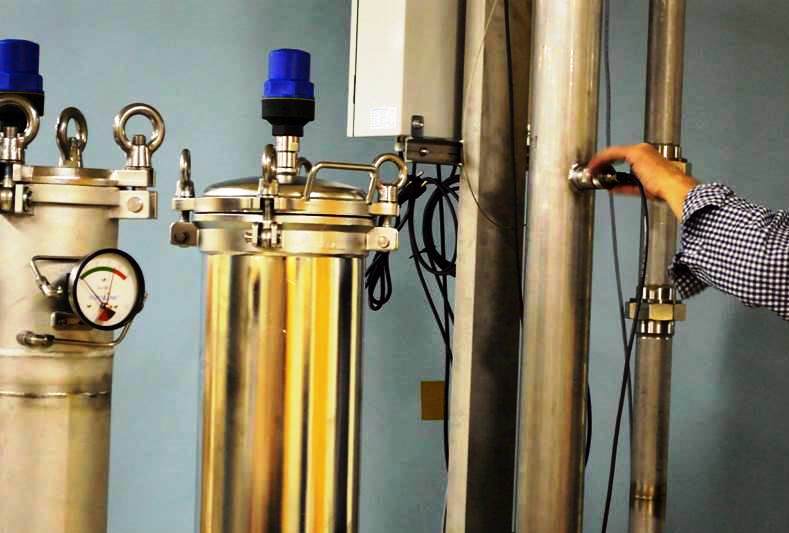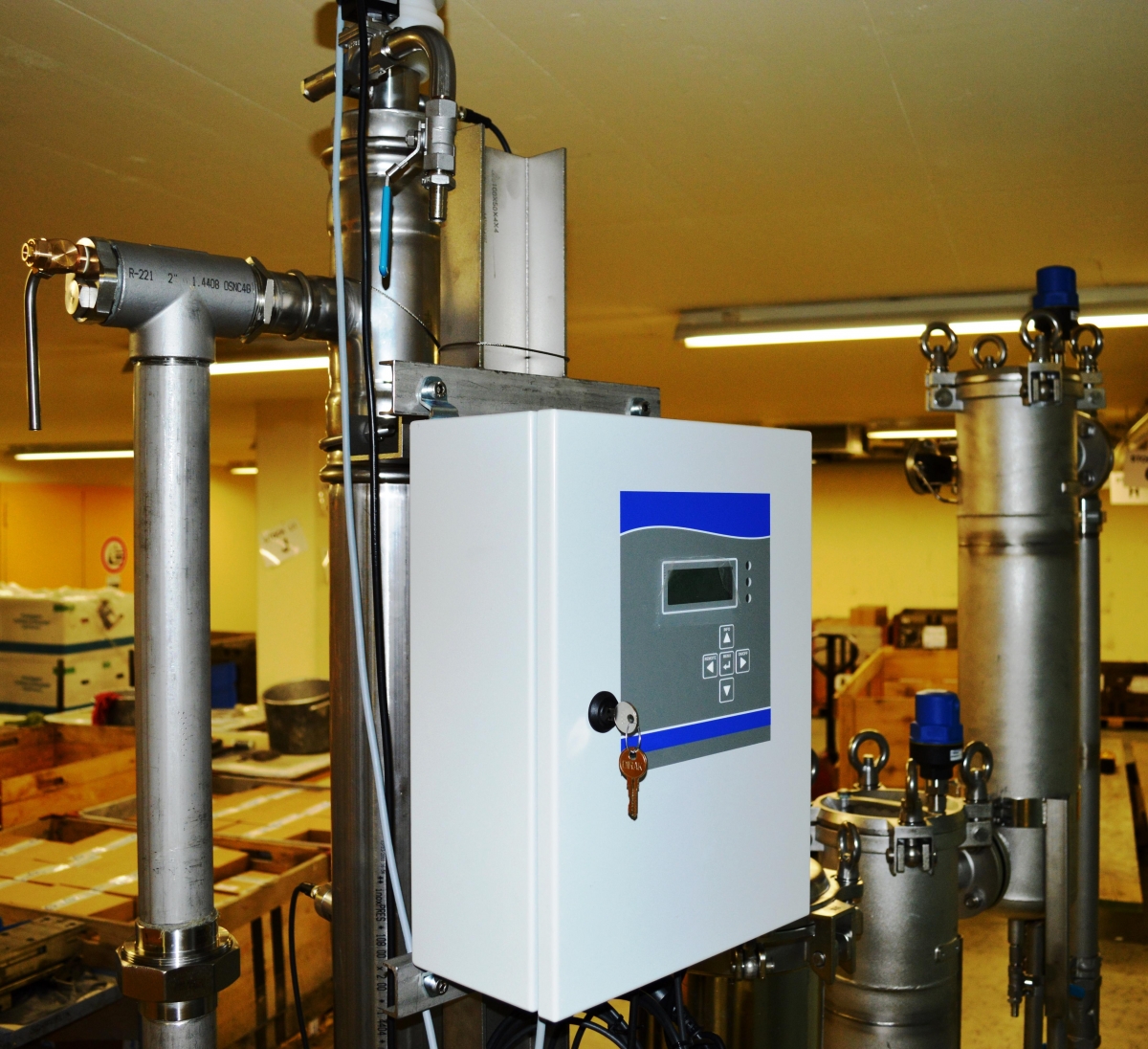Process water, Delhi, India
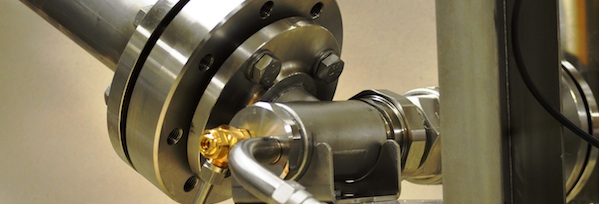
The water treatment system developed for an international confectionery manufacturer’s factory in Delhi, India, provides two complementary physical treatment methods: pre-treatment with microfiltration, followed by disinfection with UV-C irradiation. The microfiltration stage is composed of three consecutive filters with decreasing mesh sizes of 25, 5, and 0.2 microns. Following the removal of all particulate matter, the disinfection by UV-C irradiation guarantees the elimination of all microorganisms (including bacteria and viruses resistant to treatment by chlorine). The compact skid-mounted system is modularly assembled and designed so as to facilitate operation and maintenance, while guaranteeing the highest level of effectiveness and efficiency of treatment.
AquaNetto’s skid-mounted microfiltration and UV-C disinfection system
Water is pumped to the three microfiltration units which are aligned in series and which remove all particulate matter from 25 to 0.2 microns. The thrice-filtered water is disinfected by UV -C radiation, which instantaneously eliminates all microbes and pathogens, providing cleaned and germ-free water for the end-user and the envisaged application.
Pressure differential indicators are integrated along with each filter and display the pressure loss as the filter bags accumulate more and more particles. The difference in pressure thus indicates when the filter bags/cartridges need to be replaced or cleaned. All three filters integrate an air-release valve on the top and a drain at the bottom. The air release vent functions automatically as it has an internal floater and seal which move along with the suction force.
A pressure differential of 2 bars indicates that the filter mesh is being closed by particles and requires replacement
The air release vent on each filter
Sampling valves at the entrance and outlet of the UV-C unit allow the operator to test the quality of a sample of the water before and after the disinfection stage. A solenoid valve connected to the temperature sensor serves to regulate the internal temperature as well as serve as an over-flow outlet in certain cases. An integrated UV-C transmission sensor indicates whether the lamp is emitting the appropriate and required level of radiation. The state-of-the-art sensor is uniquely calibrated with the electronic control unit and immediately raises an alarm in case there is a drop in the level of UV-C transmission.
The sampling valve
The solenoid valve
The UV-C unit also integrates a flow-former which spins the water around the quartz sleeve in a helical manner. The circular flow of water around the quartz sleeve optimises disinfection and prevents the accumulation of minerals, for example limestone, on the quartz sleeve.
The top of the UV-C disinfection unit can be easily opened in order to remove the quartz sleeve and the UV-C lamp for maintenance or replacement. The UV-C unit is mounted on a movable pivot which enables the operator to lower the inclination of the reactor tube to remove the quartz sleeve and lamp, and conduct maintenance. The UV-C unit may also be dis-mounted by opening the screws on the bottom flange. A safety shut-off valve is also integrated after the outlet of the UV-C disinfection unit and is linked to the UV-C transmission sensor. In case of a drop in UV-C transmission the safety shut-off valve automatically restricts the flow of water.The movable pivot which facilitates maintenance
The UV-C disinfection unit during maintenance
Replacing the filter mesh during maintenance
The UV-C irradiation sensor
Upgrade your system with additional optional features
As per the quality of the water to be treated different mesh-sizes or filters may be used. Additional treatment methods may also be integrated in parallel systems as required (for example: ultrafiltration for treating water contaminated with heavy metals).
The different units may be arranged in varying positions (for example: in a straight line, in a horse-shoe loop, etc.) as per the constraints of physical space and the requirements of the client. The movable pivot allows the operator to move the UV-C unit to a convenient position for maintenance procedures.
The AquaNetto system may be customised according to physical space requirements
A temperature sensor indicates the internal temperature of the reactor and automatically opens a solenoid valve if the temperature is too high. The temperature may become high over time if the lamp is switched on and the water flow is zero or if the ambient temperature is 40° C or higher.
In places with extreme climates, the ambient temperature may be very high during summer and sometimes negative during winter. In such circumstances, the electronic control unit, the filters, and the UV-C disinfection unit become susceptible to damage when the water temperature becomes high.
The system integrates a closed circular loop to regulate the temperature of the water. A solenoid drain valve near the outlet of the UV-C unit connects to the T-piece integrated on the inlet pipe. A check-valve ensures that water flows in the correct direction. When the ambient temperature is high the circular return loop is opened and begins to draw in cooler water which dissipates the excess heat around the UV-C lamp.
The electronic control cabinet is also appropriately designed to sustain high temperatures. In addition to a cooling fan, the cabinet dimensions may be enlarged to allow for greater air-circulation. In extreme conditions, control cabinets are fitted with Peltier elements which use thermoelectric cooling.
VA2 and/or VA4 materials are used to construct the system and are available according to the country norms in vigour. The control unit is housed in a cabinet with ingress protection level IP65, and is also available up to IP68.
The AquaNetto electronic control cabinet
The system is relatively easy to maintain and requires the bare minimum of tools and expertise.
The time to conduct maintenance on the filters is indicated by the pressure differentials across filters. The replacement of filter bags and the cleaning of cartridges are relatively easy and contribute to prolonging the life-cycle of the system if done regularly.
Maintenance of the UV-C unit includes periodic cleaning of the quartz sleeve, and the replacement of the UV-C lamp at the end of its life. The quartz sleeve and lamp may be accessed without any tools and only require the screwing-on and off – of the cover. The electronic control unit is programmed to issue a notification before the lamp needs to be replaced, and provides enough time for the operator to make the necessary arrangements.
The AquaNetto treatment system on-site (in background) and the old derelict system in foreground (with the yellow tape)
The AquaNetto treatment system on-site
Techno-pole 4
CH-3960 Sierre
Switzerland





